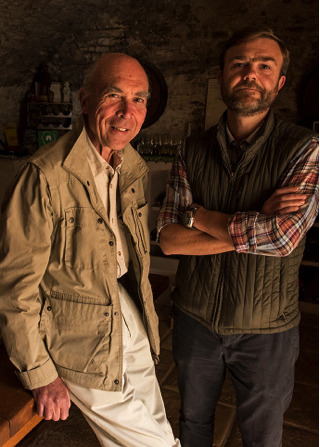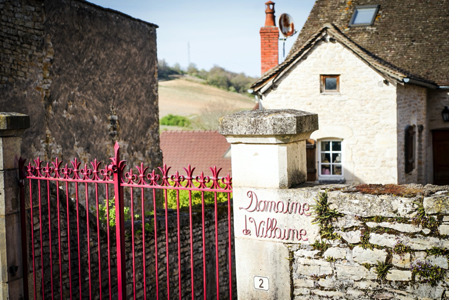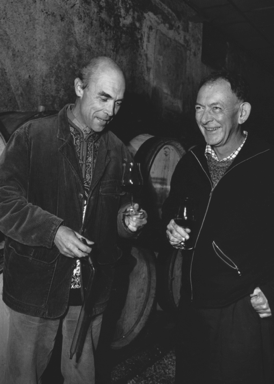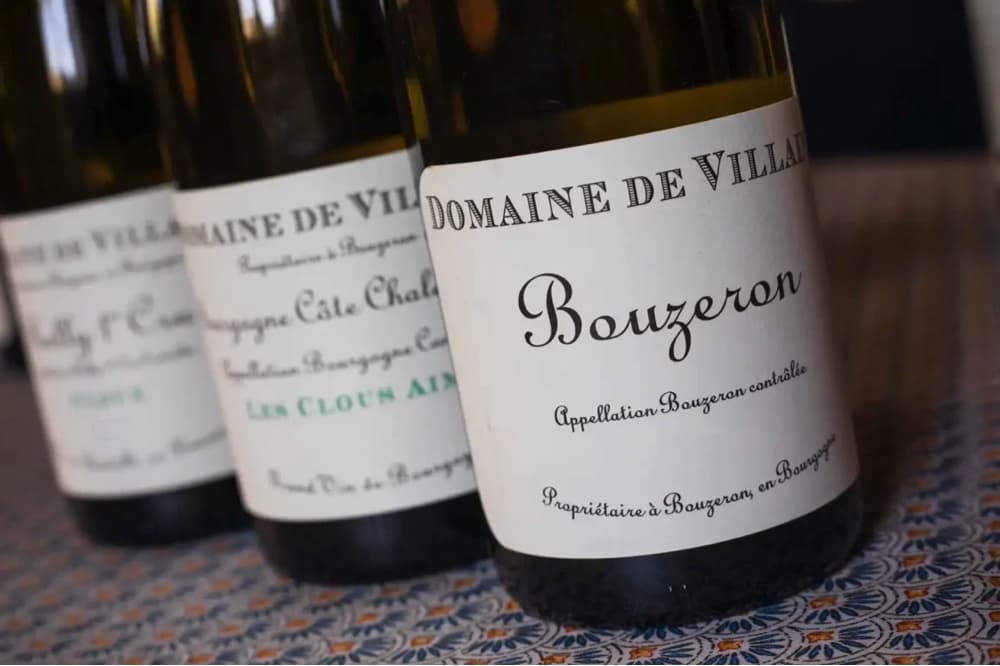
We are US low pricing on each Villaine wine below, some by quite a lot. Aubert de Villaine of course was the face and manager of the world’s most respected and lauded winery in Burgundy, Domaine de la Romanee Conti (DRC) for 50 years before his recent retirement. This is his family’s Domaine that crafts from choice plots in Mercurey, Rully, and the Cote Chalonnaise. The Bouzeron is known as one of the, if not the best Aligote you can buy and is a great price considering that!
A. & P. de VILLAINE
Vins Blancs
Bouzeron 2023 91VM/90JM
$44.99/$47.99 x 36 bottles
Les Saint-Jacques Rully 2023
$54.99 x 24 bottles
Rabource Rully 1er Cru 2022 91VM
$94.99 x 24 bottles
Vins Rouges
Les Clous Cote Chalonnaise 2023
$64.99 x 18 bottles
La Fortune Cote Chalonnaise 2023
$67.99 x 24 bottles
La Digoine Cote Chalonnaise 2023
$67.99 x 24 bottles
Les Montots Mercurey 2023
$67.99 x 24 bottles
Les Champs Cloux Rully 1er Cru 2022
$94.99 x 12 bottles
Bouzeron 2023
91VM: The 2023 Bouzeron has a vivacious nose that boldly declares, “I am Aligoté!” The palate is well balanced with a keen line of acidity and beautiful weight in the mouth, featuring hints of lemon curd, white peach and Anjou pear toward the poised finish. You’ll find few Bouzerons better than this. - By Neal Martin on January 2025
90JM: Pale lemon and lime. Backward, showing density, some opulence, but not too much, with crystalline clarity behind. Extra tension, and very long indeed. Different layers of fruit wash over the back of the palate. Drink from 2026-2028. Tasted Mar 2025.
• Sourced from 17 different parcels of Aligoté Doré in Bouzeron across 12.5ha, from vines 65-115 years-old in clay, limestone, marl soils
• Vinified in wood foudres, capacity of 30-40 hecto-liters
• The only intervention during fermentation and aging of wine is the maintaining of temperature between 20 and 22 degrees Celsius
• Each parcel is pressed separately in a small pneumatic press
• The must is put in stainless steel for a 24-36 hour cold-soak, then the wine is transferred to foudre where it stays for fermentation and élevage
• The lees are never stirred unless it is needed (in the case of reduction for example)
• Raised for 10-12 months depending on the vintage
Rabource Rully 1er Cru 2022
91VM: The 2022 Rully Raboucé 1er Cru, from the north of the appellation, has a reserved, slightly cooler nose compared to the expressive Les Margotés. The palate is fresh and vibrant, with a wonderful umami sensation, spiced with white pepper and ginger towards the finish that gently fans out. Superb. - By Neal Martin on January 2025
• Fermented and aged in foudre
• Malolactic fermentation in foudre
• Aged for 12-18 months
• Aged in bottle 1-4 months
• Chardonnay
• Vine Age: 50 years average
• Soils: Clay, Limestone
Les Saint-Jacques Rully 2023
• 80% of the wine is aged and vinified in wood foudres, 20% is aged in barrel
• The only intervention during fermentation and aging of wine is the maintaining of temperature between 20 and 22 degrees Celsius. Lees are only stirred in the case of reduction.
• Each parcel is pressed separately in a small pneumatic press
• The must is put in stainless steel for a 24-36 hour cold-soak, then the wine is transferred to foudre where it stays for fermentation and élevage
• Raised for 10-12 months depending on the vintage
• Chardonnay
• Vine Age 17 years
• Soils: Clay, Limestone, Silt
Les Clous Cote Chalonnaise 2023
• Careful selection and sorting of the grapes is done in the vineyard
• Fermented and aged in wood tanks with a minimum of 2/3 of the stems, depending on the vintage
• Wine stays in tank for 10-12 days, so as to add extra skin tannins and just a little tannin from the seeds and stems
• Raised for 10-12 months depending on the vintage
• Pinot Noir
• Vine Age: 20 - 25 years
• Soils: Clay, Limestone
La Fortune Cote Chalonnaise 2023
• Careful selection and sorting of the grapes is done in the vineyard
• Fermented and aged in wood tanks with a minimum of 2/3 of the stems, depending on the vintage
• Wine stays in tank for 10-12 days, so as to add extra skin tannins and just a little tannin from the seeds and stems
• Raised for 10-12 months depending on the vintage
• Pinot Noir
• Vine Age: 20 - 25 years
• Soils: Clay, Limestone
La Digoine Cote Chalonnaise 2023
• Careful selection and sorting of the grapes is done in the vineyard
• Fermented and aged in wood tanks with a minimum of 2/3 of the stems, depending on the vintage
• Wine stays in tank for 10-12 days, so as to add extra skin tannins and just a little tannin from the seeds and stems
• Raised for 10-12 months depending on the vintage
• Pinot Noir
• Vine Age: 35 - 45 years
• Soils: Clay, Limestone
Les Montots Mercurey 2023
• Careful selection and sorting of the grapes is done in the vineyard
• Fermented and aged in wood tanks with a minimum of 2/3 of the stems, depending on the vintage
• Wine stays in tank for 14-17 days
• Raised for 10-12 months depending on the vintage
• Pinot Noir
• Vine Age: 40 - 50 years
• Soils: Clay, Limestone
Les Champs Cloux Rully 1er Cru 2022
• 100% whole cluster fermentation
• Aged 12-18 months in demi-muids or barrel, no new oak
• Aged in bottle 2-6 months
• Pinot Noir
• Vine Age: 45 years
• Soils: Clay, Limestone


The de Villaine Story According to Kermit Lynch…
Aubert de Villaine deserves the accolades he receives. He is a reluctant hero, an unlikely trait in a man of such accomplishment, intellect, and inherent sense of noblesse. Heir to one of the most enviable wine legacies of all time, Domaine de la Romanée-Conti, the young Aubert was more interested in literature and law than wine. After spending time in New York working for an importer of Burgundian wines, he finally returned home in the mid-nineteen sixties to assume his role as co-director of DRC.
In the 1970s, Aubert and his American wife, Pamela, sought less pedigreed pastures to call home. They finally settled in the village of Bouzeron, well-situated between Chassagne-Montrachet, Santennay, Rully, and Mercurey, in the Côte Chalonnaise. However high profile his day job, Aubert still considers himself a vigneron like any other, and Bouzeron’s off-the-beaten-path location left him alone to make his own wines without the demands of upholding an international reputation. The domaine was horribly rundown when the de Villaines took over, but years of studying this unique terroir have made them pioneers in one of the last forgotten enclaves of Burgundy. The monks of the great abbey of Cluny first planted vines here in the twelfth century, leaving a legacy that has endured for centuries. Consequently, the grape varietal that reigns supreme today is the dry, white Aligoté—an unusual celebrity given its work-horse reputation in the middle of Chardonnay country. Bouzeron boasts the best Aligoté in Burgundy, the Aligoté Doré, (instead of the lesser clone, Aligoté Vert) which gives smaller yields to produce wines with more expressive aromatics. Although the grape was overlooked until 1979 when it first earned the appellation Bourgogne Aligoté de Bouzeron, the I.N.A.O. finally upgraded the appellation to A.O.C. Bouzeron in 1997, largely due to Aubert’s advocacy over the years. Aubert’s single vineyard Bourgognes, both in blanc and rouge, are equally outstanding representations of the unlikely pedigree found in this corner of the region.
The de Villaines farm three appellations within the Côte Chalonnaise, namely Bouzeron (Aligoté), Rully (Chardonnay and Pinot Noir) and Mercurey (Pinot Noir). Their single-vineyard parcels are stunning examples of what this complex and amazing terroir can yield. Though their wines are quite enjoyable young, their ability to age well is what one might expect from a master such as de Villaine. Much of this is due to both the diversity of his vinestock and his organic and biodynamic methodology in the vineyards, both of which Aubert stands by with great conviction. He also ferments his Mercureys and Rully rouge in wood tanks, a style adopted from DRC.
Pierre de Benoist, Aubert’s nephew, currently directs the domaine, upholding the sense of tradition, excellence, and standards for which it has become so well-known. In 2010, Aubert was awarded Decanter Magazine’s prestigious “Man of the Year” Award, a distinction that, unsurprisingly, the modest Aubert seemed reluctant to accept.
